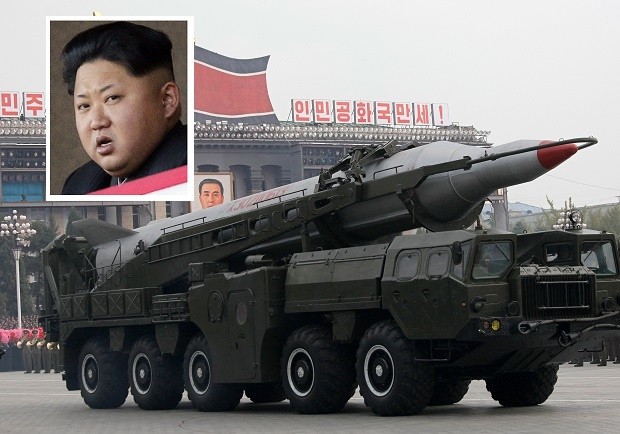
In this Oct. 10, 2010 file photo, North Korea missiles on trucks make its way during a massive military parade to mark the 65th anniversary of the communist nation’s ruling Workers’ Party in Pyongyang, North Korea. North Korea has about 21 nuclear bombs and hundreds of ballistic missiles that can target its neighbors in Northeast Asia, estimates say. AP
SEOUL, South Korea — North Korea may have produced an additional six or more nuclear weapons over the past 18 months, possibly bringing its total arsenal to more than 21 bombs, a US think tank said Tuesday.
The Institute for Science and International Security (ISIS) based the estimates on the amounts of weapons-grade plutonium and highly enriched uranium the North is believed to have produced at its Yongbyon nuclear complex.
READ: North Korea threatens preemptive nuclear strike on South, US | Korea leader says will use nuclear weapons if sovereignty ‘encroached’
The report came after International Atomic Energy Agency (IAEA) chief Yukiya Amano said last week that North Korea might have reactivated a plant at Yongbyon for reprocessing plutonium for use in nuclear weapons.
In late 2014, ISIS estimated the North’s nuclear arsenal at 10 to 16 weapons.
Since then, the North has added another four to six weapons to the stockpile for a total of 13 to 21 or more today, ISIS said.
The 13-21 estimate did not take into account the additional contribution of a possible second centrifuge plant the North may have built to produce weapons-grade uranium, it said.
“Nonetheless, this exercise, despite not being comprehensive, shows that North Korea could be significantly increasing its nuclear weapons capabilities”, the Washington-based think tank said.
Most of this increase since 2014 can be attributed to the production of weapons-grade uranium, it added.
Amano, citing satellite imagery, said last week in Vienna: “The indications that we have obtained… (are of) activities related to the five-megawatt reactor, expansion of enrichment facilities and activities related to (plutonium) reprocessing.”
The type of plutonium suitable for a nuclear bomb typically needs to be extracted from spent nuclear reactor fuel.
North Korea mothballed the Yongbyon reactor in 2007 under an aid-for-disarmament accord, but began renovating it after its third nuclear test in 2013. It carried out a fourth test on January 6.
The director of US National Intelligence, James Clapper, warned in February that the North could begin recovering plutonium from the reactor’s spent fuel “within a matter of weeks to months”.
IAEA inspectors were kicked out of North Korea in 2009. Amano did not say when the activities spotted by satellite took place.